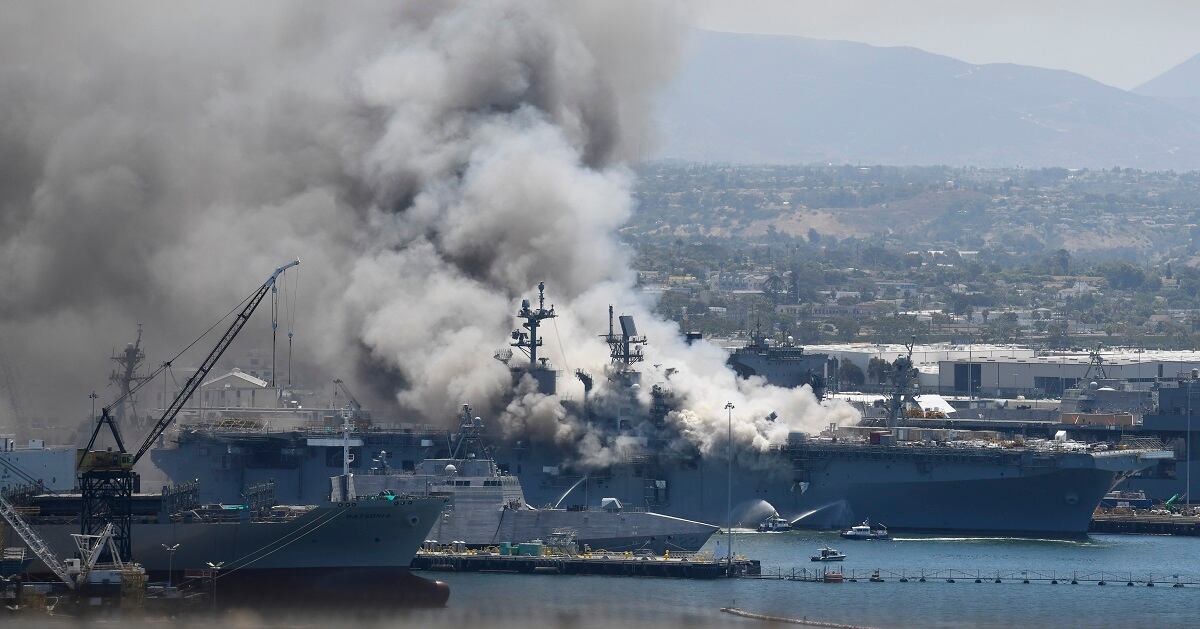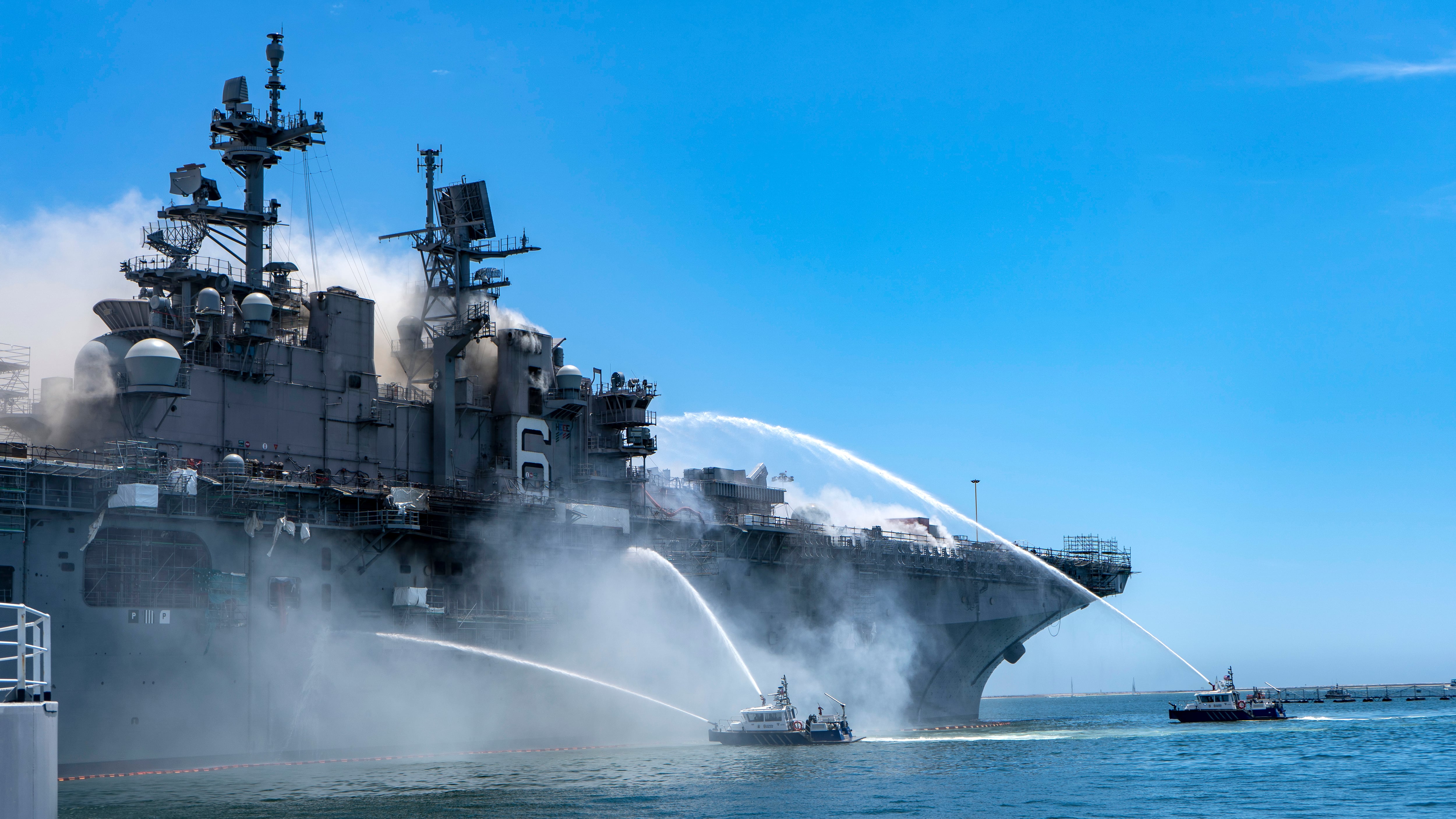As a raging fire continued to decimate the amphibious assault ship Bonhomme Richard in its San Diego port Monday for a second day, the commanding officer of Expeditionary Strike Group 3 told reporters that keeping the flames from the 1 million gallons of fuel onboard while preventing listing were the priorities.
And while Rear Adm. Philip Sobeck said he remained hopeful that the amphib would get underway again, the damage he described, as well as photos and videos of the inferno, painted a grim future for the ship.
“The superstructure and the upper decks continue to burn and have sustained damage,” Sobeck said at 11 a.m. local time. “The forward mast has collapsed, and the ship is listing. However, dewatering is in process and we’re keeping a good balance.”
Sobeck said they estimate there are roughly two well decks between fuel and the fire, which has been measured as high as 1,000 degrees in spots.
“Estimates are right now that we’ve got at least two decks between the heat source” and the fuel, he said.
RELATED

Cooling agents are being circulated around the ship in the water to keep temperatures down, Sobeck said.
“We plan for the worst case all the time, we train to it and we’re going to make sure we don’t get there,” he said.
The fire was reported at about 8:30 a.m. Sunday, and 57 personnel — 34 of them sailors — have been injured and treated mostly for heat exhaustion and smoke inhalation, Sobeck said.
Five remain in the hospital, he added.
The inferno “has spread throughout the ship” he said, adding that there was “burn damage all the way through the skin of the ship.”
“The superstructure and the island have again been flashing tremendous amount of heat underneath,” he said.
Bonhomme Richard was in the midst of extensive maintenance and modernization to accommodate the F-35 fighter jet when the fire broke out.
As part of that maintenance, Sobeck said the Halon fire suppression system had been turned off.
“Halon, the system itself, was not operational because it was being worked on in the shipyard,” Sobeck said.
Maintenance often involves big coils of cable snaking throughout the ship, which may have made it harder to seal hatches and isolate the fire.

Sobeck said the fire was first reported in a cargo hold that was full of shipyard supplies like tri-wall, rags and other materials.
“Lots of scaffolding, lots of debris in the way,” he said.
Plumes of dark, acrid smoke have been emanating from the ship for much of the past day.
Sobeck said there was nothing more toxic than what is normally on the ship and that the fire’s pollution was within federally accepted guidelines.
“There’s plastics that go around cabling, those kind of things, there’s different rags, there’s all the things that are used to kind of maintain the ship, clean the ship…and so right now we’re testing and we’re checking everything that we know, and we’re within (U.S. Environmental Protection Agency) standards,” Sobeck said.
More than 400 sailors from commands along the waterfront have boarded the ship to fight the fire, and occasional pressurization effects have resulted in a back and forth as the sailors fight to save the ship.
The fact that the Bonhomme Richard was in port for maintenance on a Sunday morning when the fire broke out was a worst-case confluence of events, according to Lawrence Brennan, a retired Navy captain who teaches admiralty law at Fordham University.
“A ship in the shipyard with ‘X’ men and women as opposed to a crew of over a thousand can’t respond as well,” he said. “Fires on Sunday morning at 0800 are never good.”
“I feel sorry for the command duty officer,” he added.
Brennan said he feared the fire would reach the fuel if it isn’t controlled or extinguished soon.
“And if that fire lasts a week, the hull’s going to fail,” he said. “If the hull splits, it’s a disaster. So that’s what I’m looking for: can they prevent this from becoming worse?”
Correction: an earlier version of this story misstated some of the items in a cargo hold when the fire broke out. Tri-wall was one of the items in the hold.
Geoff is the managing editor of Military Times, but he still loves writing stories. He covered Iraq and Afghanistan extensively and was a reporter at the Chicago Tribune. He welcomes any and all kinds of tips at geoffz@militarytimes.com.



